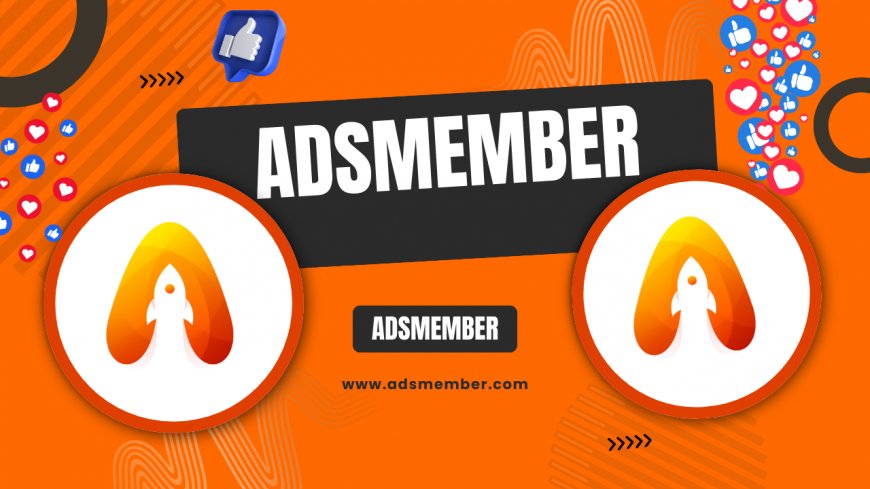What Is Bluesky? A Deep Dive into the New Social Platform
Curious about Bluesky? Discover what Bluesky is, its unique features, how it differs from Twitter, and why it’s gaining traction as a decentralized social…

Have you heard the buzz about Bluesky and wondered, what is Bluesky? Honestly, I was curious too when I first stumbled upon it. It’s a fresh social media platform that’s been making waves, often pitched as a decentralized alternative to Twitter (now X). Backed by Twitter co-founder Jack Dorsey, it’s got a unique vibe and a mission to rethink how social networks operate. Let’s unpack what makes Bluesky stand out and why you might want to jump on board.
Bluesky Explained: The Basics of This Emerging Platform
If you’re asking, what is Bluesky?, let’s start with the core. Bluesky is a social media app that launched in beta in early 2023, aiming to give users more control over their online experience. Unlike traditional platforms like Instagram or X, it operates on a decentralized model. This means it’s not controlled by a single company but runs on open protocols like the AT Protocol, allowing for more customization and freedom.
I’ve been exploring it myself, and the interface feels familiar if you’ve used Twitter before. You’ve got posts (called “skeets”), likes, reposts, and follows. But the decentralized twist? That’s where things get exciting. It’s like having the power to shape your own social media world, which, in my opinion, is a breath of fresh air in today’s corporate-driven internet.
How Bluesky Differs from Traditional Social Media
Traditional platforms like Instagram (Instagram Tips) or Facebook rely on centralized servers and algorithms that decide what you see. Bluesky, on the other hand, lets users choose their own algorithms or even host their own servers. This level of control is rare and, honestly, a bit mind-blowing when you first grasp it.
Think of it as a choose-your-own-adventure book. Want a feed focused on art? Pick or build an algorithm for that. Tired of toxic debates? Filter them out. This flexibility is why many are flocking to Bluesky, especially creatives and tech enthusiasts who crave something different.
Key Features That Make Bluesky Unique
Now that we’ve covered the basics of what is Bluesky, let’s dive into what sets it apart. It’s not just another Twitter clone; it’s got features that make you rethink social media entirely. I’ve been playing around with the app for a few weeks, and some of these tools have genuinely impressed me. Here’s what you need to know before signing up.
Decentralized Networking with the AT Protocol
Bluesky runs on the AT Protocol, short for “Authenticated Transfer Protocol.” This tech allows users to move their data across different servers without losing their identity or followers. Imagine switching from one email provider to another but keeping all your contacts—that’s the kind of portability we’re talking about.
In practice, this means you’re not locked into Bluesky’s ecosystem. If you don’t like how things are run, you can take your digital identity elsewhere. It’s empowering, though I’ll admit it can feel a bit technical at first. If you’re not tech-savvy, don’t worry—there are plenty of guides to help you out.
Custom Feeds and Algorithm Freedom
One of my favorite things about Bluesky is the ability to customize your feed. Unlike X, where the algorithm often feels like a mystery box, Bluesky lets you pick from community-made algorithms or stick to a chronological feed. It’s like curating your own playlist instead of relying on Spotify’s suggestions.
This feature has been a game-changer for me. I’ve set up a feed for just local news and another for memes—pure gold. According to early user stats shared by Bluesky’s team, over 40% of beta testers have engaged with custom feeds within their first week. That’s a sign people are loving this control.
Invite-Only Access and Community Vibes
Bluesky is currently invite-only, which adds a layer of exclusivity. You either need a code from an existing user or must join a waitlist. When I got my invite, it felt like joining a secret club, and the community vibe is surprisingly warm compared to the chaos of larger platforms.
That said, this model won’t last forever. Bluesky plans to open up eventually, but for now, it’s fostering a tight-knit group. If you’re hunting for an invite, check Bluesky’s official site or ask around in tech circles—someone’s usually got a spare code.
Getting into Bluesky can be tricky with its invite-only setup. Start by following Bluesky’s official account on other platforms like X for giveaways. Join tech-focused Discord servers or Reddit communities like r/BlueskySocial—users often share codes there. Lastly, network with early adopters; a polite DM can sometimes work wonders. Patience is key, but these steps boost your odds.
Quick Tip: How to Score a Bluesky Invite Code
Bluesky vs. Twitter (X): Why Make the Switch?
Since Bluesky often gets compared to Twitter, let’s break down how it stacks up against X. I’ve used both extensively, and while they share DNA, they’re worlds apart in philosophy. If you’re debating whether to switch, here’s my take on the key differences and why Bluesky might win you over.
Control and Transparency
On X, you’re at the mercy of ever-changing algorithms and policies. Bluesky flips that script with transparency and user control. You can see how feeds are built and even tweak them. For me, this openness feels like a trust-building move that X just can’t match right now.
Community and Content Moderation
X has become a battleground of opinions, often toxic. Bluesky’s smaller, curated community feels more civil—at least for now. Plus, its moderation isn’t top-down; users can influence rules on their servers. It’s not perfect, but it’s a refreshing change, in my opinion.
Pros and Cons of Switching to Bluesky
- Pros:
- Decentralized structure gives you more control.
- Custom feeds let you tailor your experience.
- Smaller community feels less chaotic.
- Cons:
- Invite-only access limits who can join.
- Smaller user base means less content variety.
- Learning curve for decentralized features.
FAQ: Common Questions About Bluesky
What Is Bluesky and How Does It Work?
Bluesky is a decentralized social media platform built on the AT Protocol, allowing users to control their data and customize their experience. You post short messages, follow others, and engage like on Twitter, but with the freedom to choose algorithms or servers. It’s currently invite-only, so you’ll need a code to join.
Is Bluesky Really Different from Twitter/X?
Yes, it’s quite different. While the layout resembles Twitter, Bluesky’s decentralized nature means no single entity controls it. You get more say in your feed and data, unlike X’s centralized, algorithm-driven approach. It’s a philosophical shift as much as a functional one.
How Can I Get a Bluesky Invite Code?
Bluesky is invite-only for now, so you’ll need a code from an existing user or join the waitlist on their site (Bluesky Official). Check tech communities on Reddit or Discord, or follow Bluesky on X for giveaway announcements. Networking helps too!
Is Bluesky Free to Use?
Absolutely, Bluesky is free during its beta phase, and there’s no indication of a paid model yet. Some speculate future premium features might emerge, but for now, it’s accessible at no cost once you’re in. Enjoy it while it’s open and evolving.
Who Owns Bluesky?
Bluesky operates as an independent public benefit corporation, initially funded by Jack Dorsey, Twitter’s co-founder. It’s not owned by a big tech giant, which aligns with its decentralized ethos. The focus is on user empowerment over corporate control, which I find inspiring.
So, there you have it—a deep dive into what is Bluesky and why it’s turning heads. Whether you’re a social media junkie or just curious, Bluesky offers a fresh perspective worth exploring. I’m excited to see how it grows, especially as more users join. Have you tried it yet? Drop your thoughts or invite code tips below—I’d love to hear your take!
What's Your Reaction?
 Like
0
Like
0
 Dislike
0
Dislike
0
 Love
0
Love
0
 Funny
0
Funny
0
 Angry
0
Angry
0
 Sad
0
Sad
0
 Wow
0
Wow
0




















































